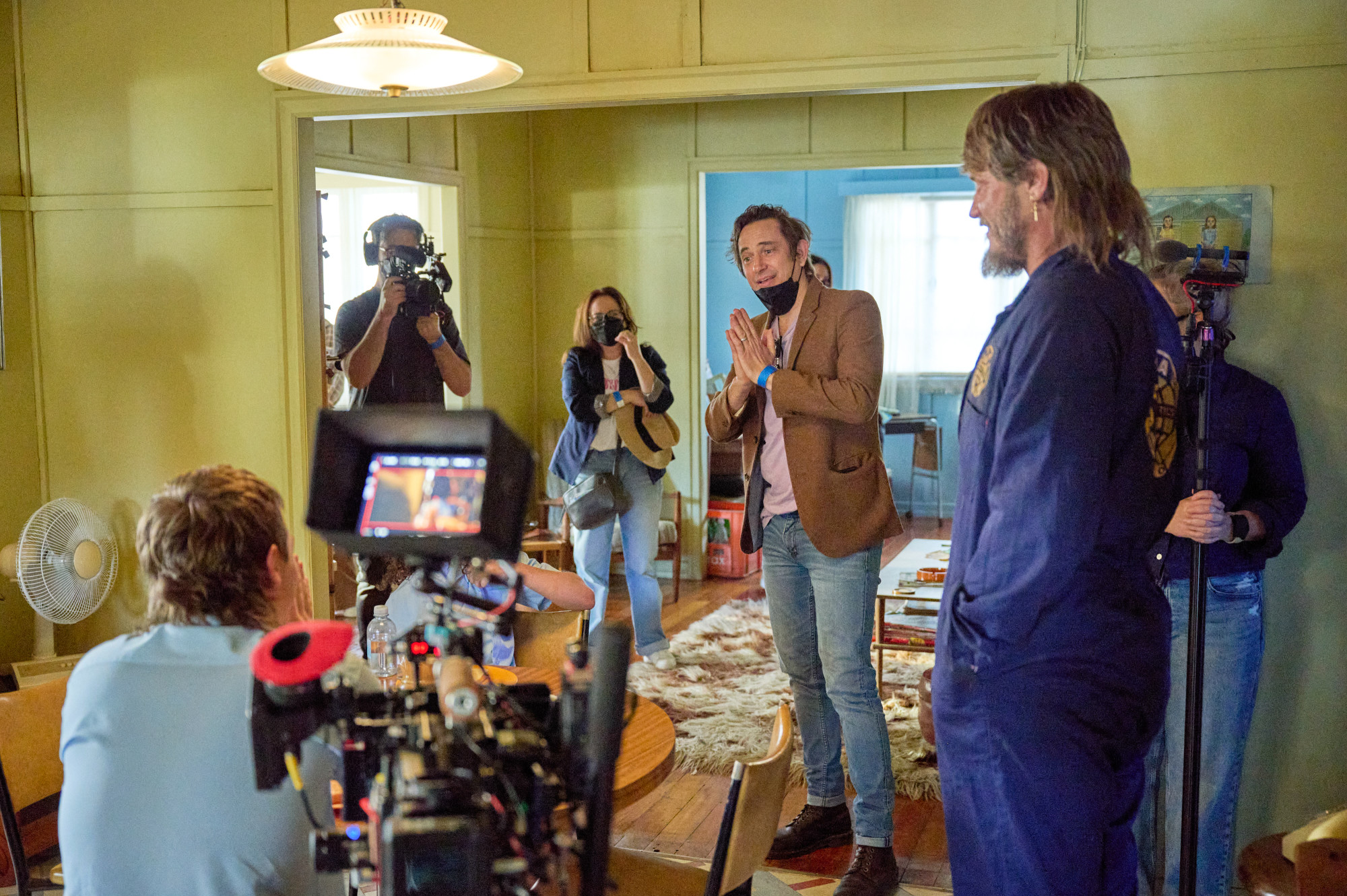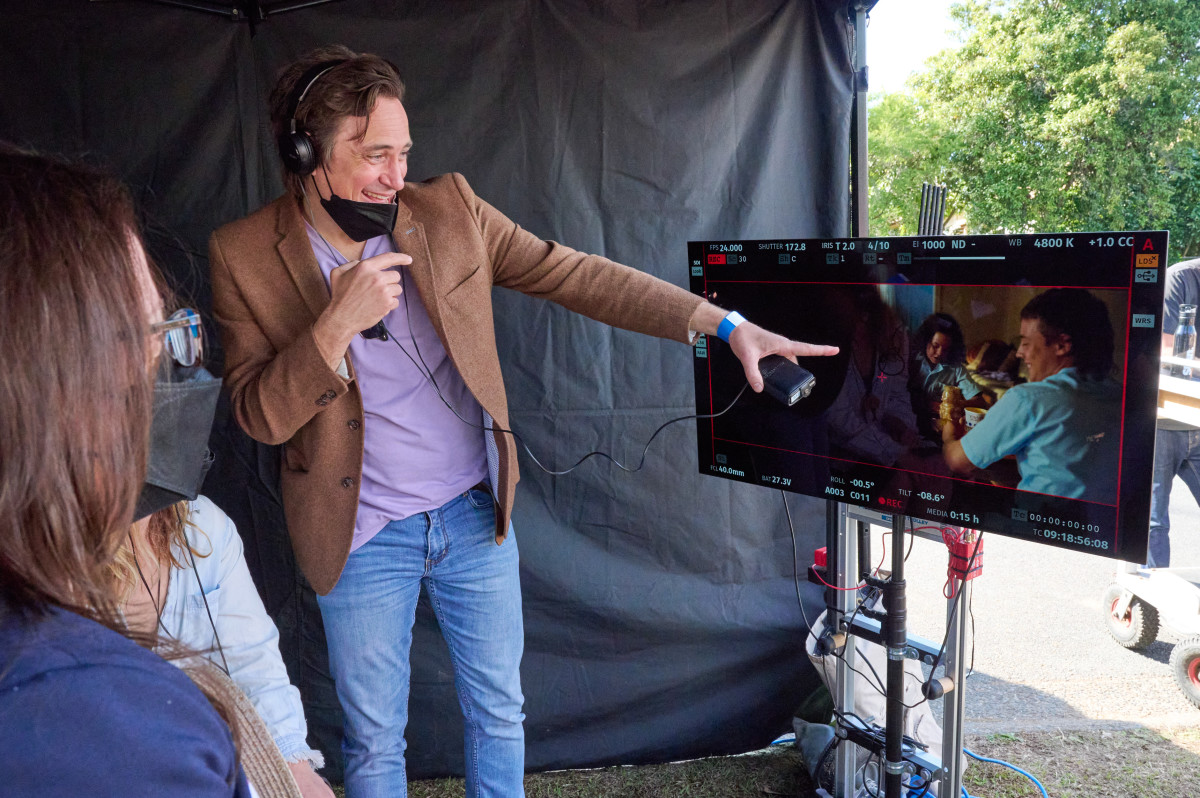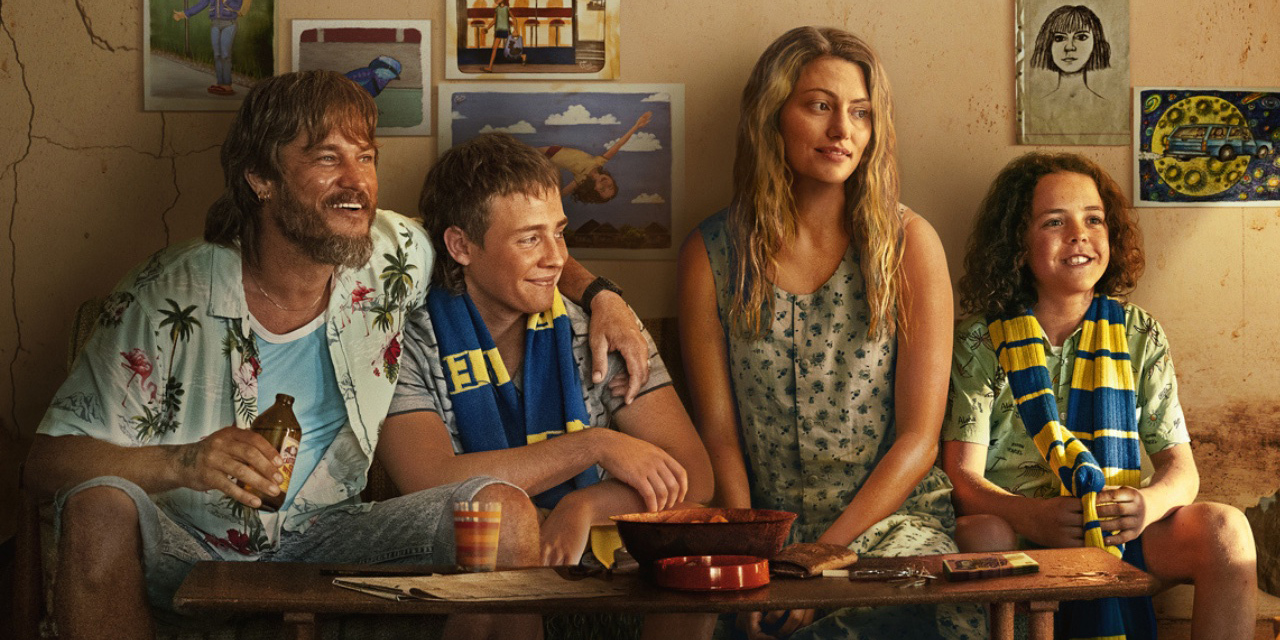Set in 1980s Brisbane, Boy Swallows Universe sees a precocious boy and his selectively mute brother embark on a suburban odyssey of love, redemption and retribution after their family is torn apart by a drug lord. In large part autobiographical, the story emerged as a novel by Trent Dalton in 2018. Such was its impact and popularity it has been retold as a stage play, and now as smash hit TV series commissioned by Netflix.
The Rebel Fleet (TRF) was heavily involved in project prep for the series, along with technical and colour pipeline configuration, documentation and testing. Supplying dailies, under the supervision of an expert technician and colourist, the company also took charge of collating all metadata via The Rebel Fleet’s proprietary software suite, Konsol.
The Challenge
Shot over several months, with a changing crew line-up including Directors and DOPs, Boy Swallows Universe presented some challenges in terms of logistics and consistency. It also has some intrinsic challenges as a story, such as the time shift between protagonist Eli’s early and later stories and trying to capture the story’s subtle dance between reality and imagination.
This meant the production would rely heavily on TRF to maintain a consistent approach and look, across time and through shifting personnel. It would also have to enable the creative team’s story-telling, achieving an enigmatic balance.

The Solution
TRF’s involvement in the production stretched from providing dailies services to metadata collection and collation using Konsol, right through to post-production.
TRF’s dailies colourist, Justin Heitman, communicated closely with the DOPs to ensure the dailies looked how they wanted and were kept consistent for Editorial.
TRF also supplied its proprietary software solution, Konsol, to collate metadata from multiple sources. These covered script supervisors’ notes, camera files and camera sheets, sound department, dailies QC, and colour pipeline. Also delivered in a timely manner were Avid media, Avid bins and editorial media.

The Impact
The experience of working with The Rebel Fleet met with universal acclaim from those involved in the production.
“It was fantastic. I’d worked with Justin Heitman, the colourist, before and I knew just how good he was.” explained Mark Wareham ACS, one of the cinematographers who worked on the series. “So that was the first thing that was comforting for me. But I hadn’t really worked directly with The Rebel Fleet. I was aware of them and had been working just as a day player, on another unit, when they were involved. So I wasn’t previously aware of the metadata management system, Konsol, and having that data with you the whole way through – it was really great.”
The value of Justin as both technician and colourist was echoed by DOP Shelley Farthing-Dawe on the earlier episodes. “Dealing with Justin was great. He was my go-to person for the whole job in terms of having someone looking critically at the pictures,” says Shelley. “Just to go through the day and make sure everything’s sitting where it should be technically, especially when I was pushing things.”
With Justin responsible for such a wide range of responsibilities, he relied heavily on the rest of The Rebel Fleet team, and is full of praise for the support he received.
“As a contractor – or you could say, preferred supplier – it’s why I love working with The Rebel Fleet,” he says. “You’re really part of a team, part of The Rebel Fleet family. I’ve worked with them for quite a few years and I know a lot of systems myself. But there are definitely things beyond my scope, so it’s great to know the team are always there to call for backup.”
“They’ve got really good IT support 24/7, and online chats like Slack and WhatsApp, so if there’s any issues with anything I just log into those guys.”
“In the dailies room, if I know on set they’re having issues I can ask the guys at TRF because they’re DITs, they’re video assist guys, they’ve got so much experience on so many facets of on-set as well. So it means not only can I supply good support in what I do, but also to the DOPs and the camera teams. They may say, hey, the camera’s doing this, do you have any idea what that might be? And I’m like, give me a sec, and I jump onto The Rebel Fleet brain. The back-end support from TRF is what makes them priceless.”
Justin Heitman, Colourist
With a production which – like many today – stretches across locations, time and even personnel, maintaining consistency is critical. The bedrock of this on Boy Swallows Universe was the workflow TRF designed and implemented.
“In this streaming world, it’s very competitive but you also have to work pretty fast, and you’re often not shooting in the place you’re posting.” explains Mark Wareham.
“With The Rebel Fleet, everything was set up really well and nothing got missed by way of tech-checking. It’s good to have this safety net around you and know that the dailies are going to get put through to the editor the way you want them seen. If you just try a ‘Show LUT’ it can put things down a path where editors start doing their own grades or other stuff.”
Mark Wareham ACS, one of the series’ cinematographers
The benefits of TRF’s defined workflow were certainly clear at the next stop on the line, with 1st Assistant Editor Evangeline (Evie) Read. “After two years’ back-to-back working with The Rebel Fleet, which was amazing, I was so spoiled. I’ve now moved on to another production and am not getting anything like they do. The amount of extra work I’m going to have to pick up is insane.”
So what’s it like for a 1st AE like Evie working with The Rebel Fleet?
“During a shoot we start off our workflow with them, they do all the offloads with Justin doing the colouring after wrap. I’ll get all the editorial media transfers, a bin with all of it ready to go – a package of everything I needed. Also they upload everything to PIX so, with a sync, it’s a real game-changer. If I have the producers saying they want to see the rushes from yesterday, it’s all up there ready to go and I can get on with what I need to do.”
Evie Read, 1st Assistant Editor
The capture, collation and delivery of metadata was something Evie and others found incredibly helpful – and a contrast to working on other productions. “It was huge. I remember the visual effects editor asking ‘where’s the metadata?’ and I said it’s already there, it’s in the bin. You don’t need to put it in, it’s done! The same goes for editorial. We had three different script supervisors across Boy Swallows Universe and The Rebel Fleet’s system pulled all the tabbed data into Avid.”
“Having that continuity data saved us an hour each morning. It was like having an extra assistant, but automated.”
Evie Read, 1st Assistant Editor
It wasn’t just the automated help that impressed Evie. “Chris [Hogben, Senior Systems Engineer], Michael [Parente, Systems Engineer] and Justin were my three ports of call. They set everything up, asking ‘are you happy with this, is this working for you?’, which was great. And I’d have a call with Michael every one to two weeks, checking everything was okay. But it was all really seamless.”
Timeliness was also a factor, as Evie recounts that shoots would often wrap in the small hours but she would always get what she needed with no issues. “It was a really tight ship,” explains Evie, “and I felt really supported.”
Another helpful aspect of TRF-established workflow was the continual supply of colour-matched rushes thanks to Justin, the colourist, working nearby with everything needed. For Evie this eased studio oversight considerably.
“Unlike dealing with raw images, at all times our rushes looked really good, people just couldn’t believe how good,” explains Evie. “It gave confidence that we were producing something really beautiful, and professional. Not just in the cut but in what we were shooting too, which was nice for the DOPs. It really gave everyone a sense of security.”
Mark Wareham agrees. “Being able to pull up the morning’s dailies, say if we’re picking up a scene in the afternoon, I really liked. Also I really liked having graded stills. I was at the final grade and went back and referred to the stills, not the graded offline. As a reference tool it’s great. They did a week of pick-ups on Boy Swallows Universe, mostly with some new scenes, and we were able to give them the stills for the scene either side just on an iPad.”
Sitting at another point along the line entirely, Post-Production Producer Livia Hanich adds her perspective. “I would say from the visual perspective the consistency of the material we were getting from day to day, and across cameras, made a real difference in the cutting room. Even though the material is considered offline, when you’re screening this for executives, particularly studio and network people, small things can ‘bump’ them. And they may not understand that they are getting bumped. You can say this is an offline, it’s not fully graded, it’s not final mixed, that sort of thing. And they say ‘yeah, we know’, but things can still affect them. Having that consistent look just takes that off the table, so the viewing experience by executives is as seamless as possible.”
Being able to rely on consistency, in the look and via easily-referenced metadata, was crucial for Livia. “On the visual matching side, from a technical standpoint, when we hand over elements for visual effects that reference from the editorial is what they’re going to use to set their look. So when they send back their material it has to drop in and look like the original reference material. With multiple cameras across the set, that can be a real challenge. So that metadata is vitally important.”
“It flows all the way through, from conform through the actual DI process, for the assembly of the final picture from a locked cut, as well as all the data for our visual effects, including lenses. Having it all embedded in our acquired material is really time-saving. When those things aren’t part of it, there’s a lot of chasing. And often, by the time you’re in the DI finishing process and visual effects, the production has wrapped. Everyone’s gone, the relevant paperwork too, or things might not have made it onto the relevant paperwork. It’s really challenging.”
In contrast, Livia found everything went incredibly smoothly. She’s recently returned home after over 25 years working working in the industry in Los Angeles, yet she had never encountered a production process quite like the one masterminded by TRF on Boy Swallows Universe.
“It was my first time working with The Rebel Fleet and they were a great team. They have a really solid technical understanding. They know their business, so it was great working with people who really understand the processes, the needs, and who can meet challenges as they come along.”
Livia Hanich, Post-Production Producer
One such challenge came in the shape of a post-wrap chunk of drone footage. “It was a camera we’d never used before, obviously,” says Livia. “We lost a lot of daylight. The exposure went below anything we’d normally think of using. But The Rebel Fleet managed to extract it from the card, process it down in Sydney, regrade it and get more exposure, then deliver it to us for Editorial. Every production has its own idiosyncrasies in the ways it wants to work, and The Rebel Fleet’s ability to be flexible was great. We met our timelines, no curveballs, The Rebel Fleet was always on top of any technical issues.”
It’s a sentiment echoed by Michael Messih, Technical Operations Manager for Sydney-based Spectrum Films, who provided picture and sound post-production on the series. “We’ve worked with The Rebel Fleet quite a few times now, and you can always tell when a job has them on it because everything is thought through so meticulously,” says Michael. “Obviously, they were shooting up in Queensland but we didn’t feel disconnected in the slightest. Whether in the information they were passing through to us, managing the LTO deliveries, when we were doing VFX pulls and conform pulls, just all the information was seamless.”
While acknowledging the role of Konsol in collating metadata across the production, Michael identifies a few other areas that made a big difference. “Going back to the very early days pre-shoot, we were on calls with Chris and The Rebel Fleet, just getting those really early workflow documentations together and feeding into any information that would affect how we were finishing it. Also, making sure that files were coming into Avid, what metadata was captured, how it was handed over, things like that. And with the on-set colour pipeline, it made sure that what Shelley and Mark were looking at on set was what came through to the grade suite. It was really reassuring to them as creatives that it was going to translate through to HDR.”
While all those involved in the production are generous in their praise, perhaps the final word best belongs to 1st AE Evie Read:
“I think now, realising how good working with The Rebel Fleet was, it’s made things hard for the future. When you realise that what they do is not the industry standard but something above and beyond. It realistically saved me maybe two hours a day, so I hope it does become the industry standard. Everyone wants to give good feedback when something is this good.”
Evie Read, 1st Assistant Editor
